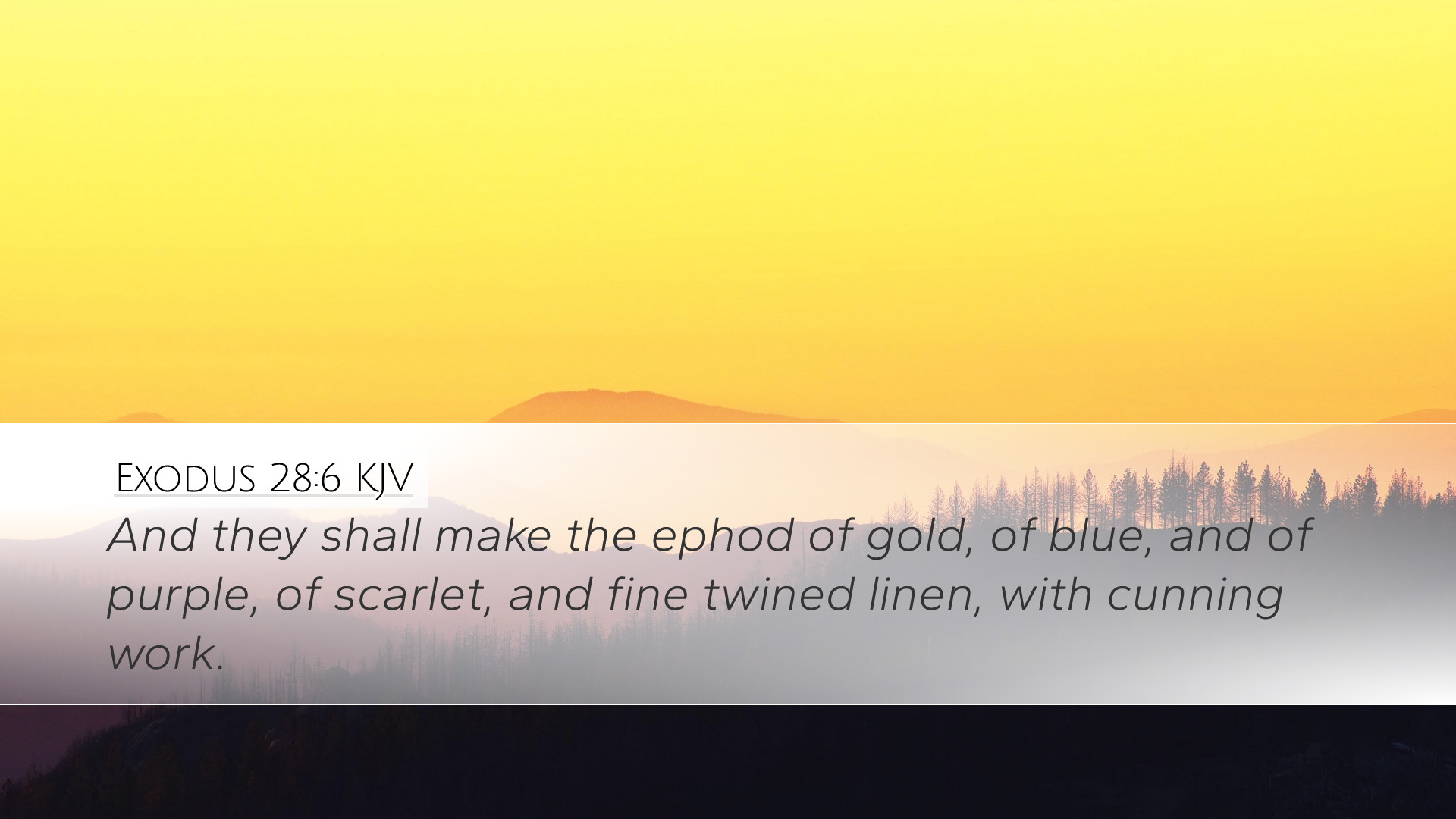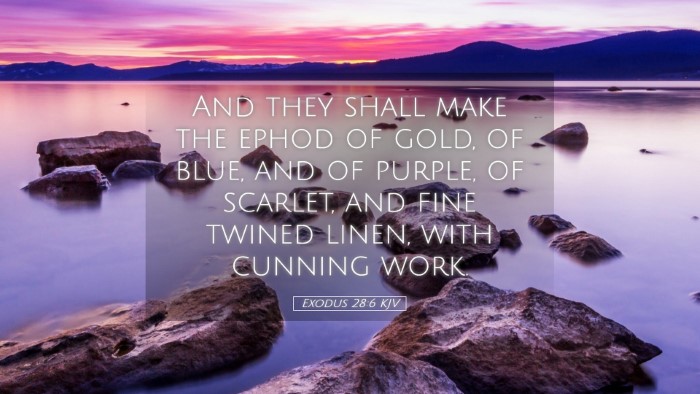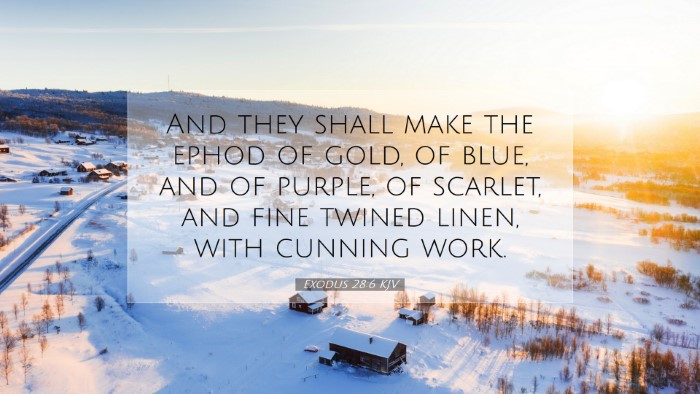Exodus 28:6 Commentary
Exodus 28:6 states: "And they shall make the ephod of gold, of blue, and of purple, and of scarlet, and fine twined linen, with cunning work." This verse describes the construction of the ephod, a key ceremonial garment for the high priest, representing the significance of priestly duties and the relationship between God and His people.
Introduction
The ephod holds profound theological and symbolic significance in the Old Testament, particularly in the context of worship and representation before God. This commentary synthesizes insights from public domain sources, drawing upon the observations of Matthew Henry, Albert Barnes, and Adam Clarke. Each of these commentators provides valuable interpretations that can enlighten pastors, students, theologians, and scholars.
The Significance of the Ephod
Albert Barnes emphasizes the ephod as a distinctive garment marking the identity of the high priest. It served not merely as a robe but as a representation of the spiritual duties and the authority granted to the priest in his intercessory role.
Symbolism of Colors and Materials
- Gold: Represents divinity and the glory of God. Gold is the finest of metals, symbolizing purity and the eternal nature of God's covenant.
- Blue: Often interpreted as the color of the heavens, it symbolizes divine revelation and aspiration towards God.
- Purple: A royal color, symbolizing both kingship and the richness of God's grace extended to His people.
- Scarlet: Represents sacrifice and atonement, drawing connections to the blood of the sacrificial system.
- Fine Twined Linen: Signifies purity and righteousness, reflecting the moral requirement for those serving God.
The Craftsmanship Involved
Matthew Henry remarks on the "cunning work" referred to in the verse, indicating that the construction of the ephod required not just skill but also divine inspiration. This craftsmanship is reflective of a broader theme in the Hebrew Scriptures: the importance of excellence in worship and service to God.
The Role of Artistry in Worship
Henry’s commentary reveals that the craftsmanship is not merely functional but bears a theological significance. The artistry in the ephod's creation underscores the importance of beauty and excellence in worship, serving as a reflection of God’s glory and majesty.
Priestly Identity and Responsibility
Adam Clarke elaborates on the responsibilities associated with the high priest’s role, which included mediating between God and the Israelites. The ephod symbolizes this intercessory relationship, as the high priest carried the names of the tribes of Israel on his shoulders, indicating that he bore the weight of the people's needs and sins in his service.
Connection to the People
Clarke points out that the ephod is not only about priestly dignity but also signifies the relationship between the high priest and the community. It serves as a reminder that the duties performed by the priest were for the benefit of the people's spiritual welfare.
Reflection on Modern Priestly Roles
This imagery of the ephod can be applied to contemporary Christian leadership. Pastors and spiritual leaders today are called to embody the principles represented by the ephod: commitment to godly service, quality in worship, and diligence in bearing the burdens of their congregations.
Lessons for Today's Church
- Excellence in Craft: Just as the ephod was crafted with care, church leaders should strive for excellence in ministry and worship.
- Mediatorial Role: Jesus Christ serves as our ultimate High Priest; however, spiritual leaders are called to advocate for their congregations through prayer and teaching.
- Community Awareness: Understanding that leadership is not just about authority but also about carrying the needs and prayers of the community before God.
Conclusion
Exodus 28:6 invites us into a deeper understanding of the significance of the ephod and its implications for worship, leadership, and community. Drawing from the insights of renowned biblical commentators, we recognize the rich theological tapestry woven into the fabric of this ceremonial garment. As modern believers, may we embrace the spirit of what the ephod represents: a commitment to honor God through our service and to carry the weight of our community with grace and diligence.


